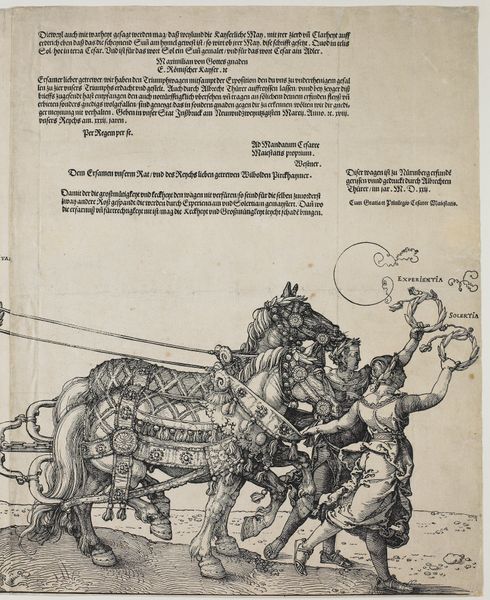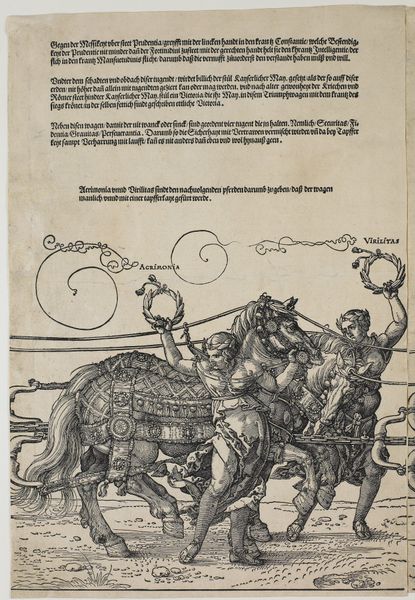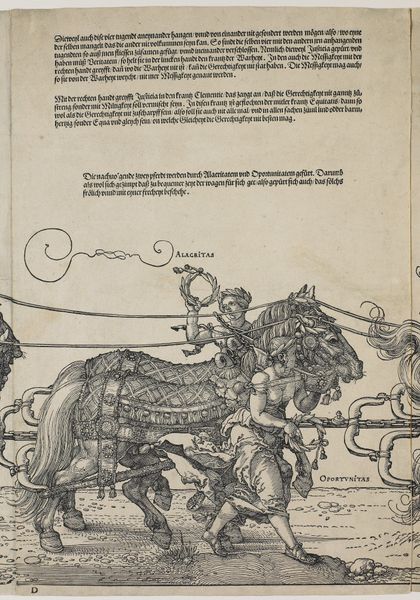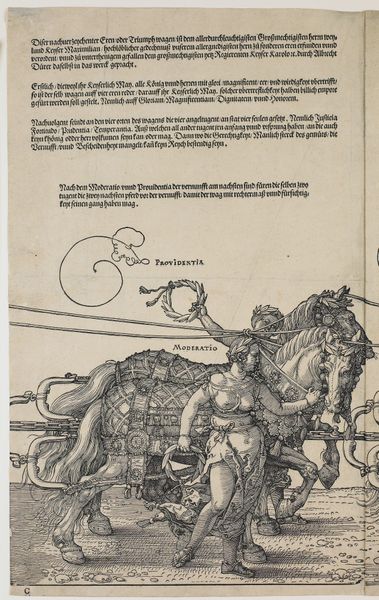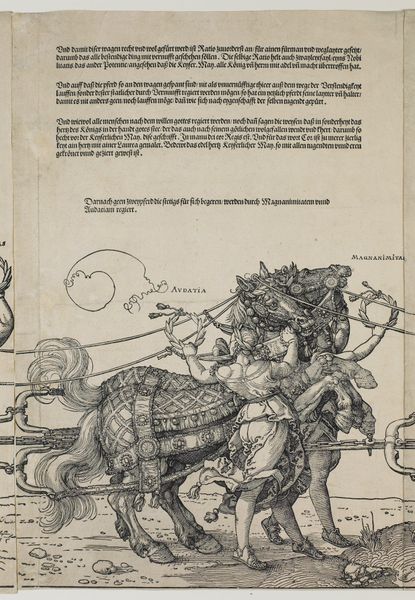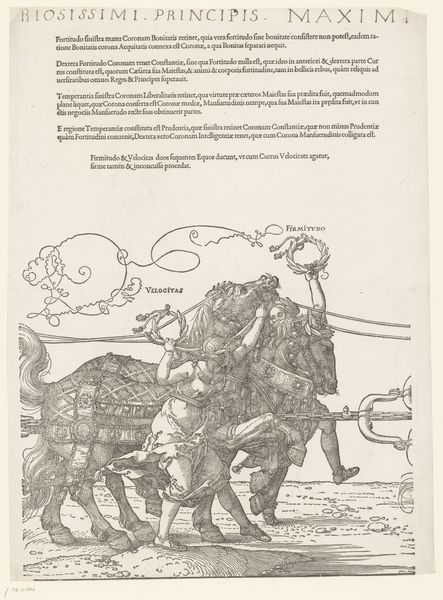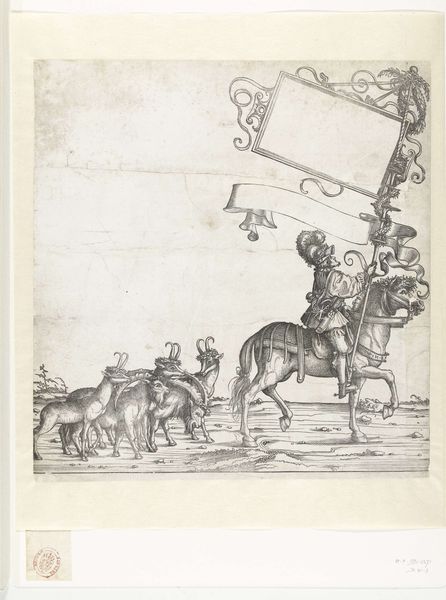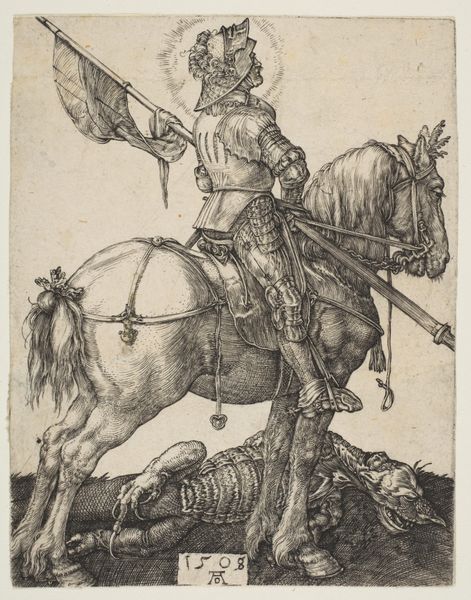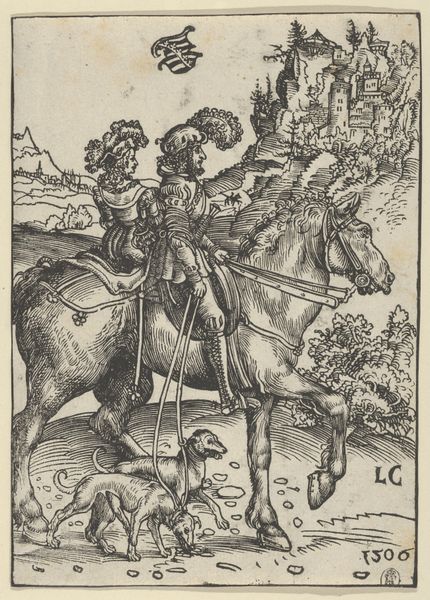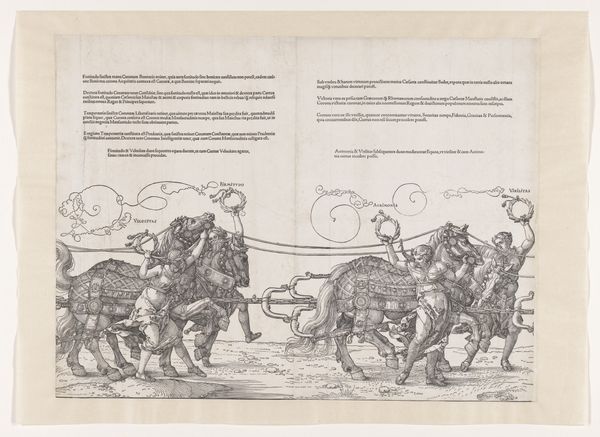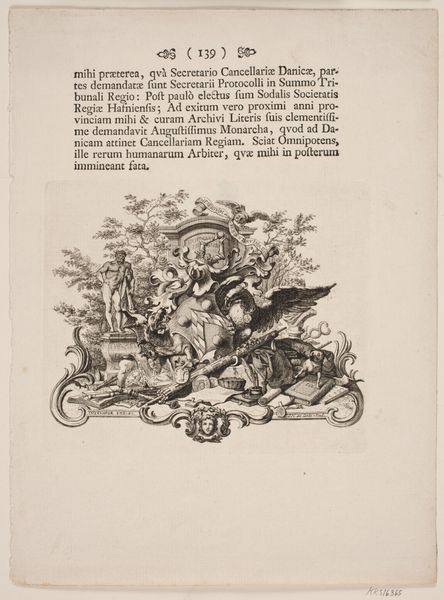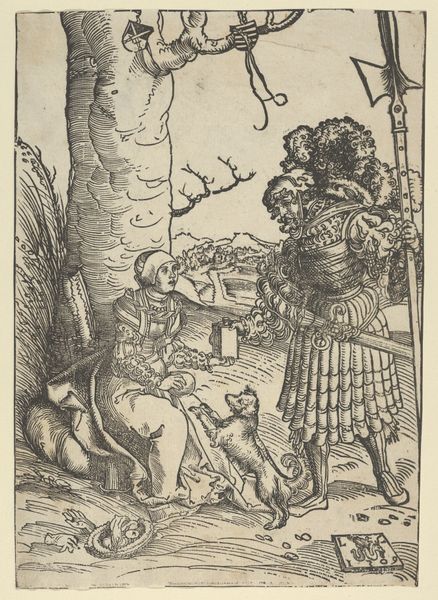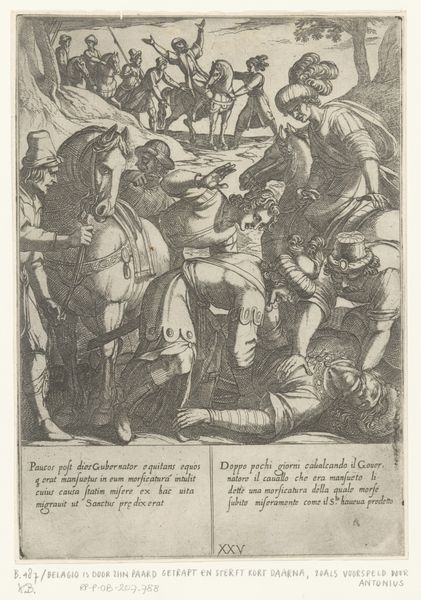
Large Triumphal Carriage of Maximilian I c. 1518 - 1522
0:00
0:00
print, ink, woodcut
#
allegory
# print
#
figuration
#
ink
#
woodcut
#
line
#
pen work
#
history-painting
Dimensions: 15 15/16 x 10 7/8 in. (40.48 x 27.62 cm) (sheet)
Copyright: Public Domain
Editor: This is Albrecht Dürer’s “Large Triumphal Carriage of Maximilian I,” created between 1518 and 1522. It’s a print made with ink and woodcut. I'm really struck by the density of lines, creating a powerful sense of movement even though it’s a static image. What do you see in this piece? Curator: Initially, my eye is drawn to the intricate formal composition. Notice how the artist organizes figures and shapes to establish a focal point. Do you notice the symbolic repetition and careful symmetry that lends a unique balance to the image? Editor: I do. The horses especially are almost mirror images. How does this contribute to our understanding of the print? Curator: The symmetrical composition and the density of detail create a structured viewing experience, but it does more. I see in this approach a demonstration of control, a reflection of the desired order and strength associated with Maximilian's reign. Consider how Durer's strategic distribution of ink affects the value and tonality. This not only models light, shade, and depth, but also emphasizes the central themes the patron is interested in showing about himself and his reign. Editor: So, it’s not just decorative, but really reinforcing the message of power and stability? Curator: Precisely. And let us look closer at the lines. What impact does the choice to focus solely on line and forego an expansive tonal range do? This encourages careful, studied observation. I see a thoughtful construction rather than simple depiction. Editor: I never considered how much the artistic choices emphasize specific qualities! I thought it was just a representation, but now I realize the visual composition reinforces power and thoughtful intent. Curator: And this intense visual order communicates control as well. By slowing our eye down with dense line work and symmetrical representation, Durer helps ensure Maximilian's strength and capability is fully seen by all.
Comments
minneapolisinstituteofart almost 2 years ago
⋮
Dürer's magnificent allegorical design for the Imperial chariot was originally commissioned in 1512 as the centerpiece of Maximilian's Triumphal Procession, one of the most ambitious projects in the history of the graphic arts. Dürer's elaborately embellished carriage was intended to form the climax of the entire procession, showering the Emperor in personal glory, while underscoring his dynastic power. The final fully elaborated drawing for the woodcut was completed only in 1518, and the woodcut remained unfinished at the time of the Emperor's death in 1519. In 1522, Dürer published the Triumphal Chariot himself as an independent woodcut dedicated to the Emperors Maximilian and Charles V. The print differs from the original design in the addition of printed text explaining the various symbolism of the work and a short history of its production. Dürer also omitted the Emperor's family from the composition, for after Maximilian's death it seemed fitting to interpret his "triumph," not as a dynastic manifesto but as a personal apotheosis.
Join the conversation
Join millions of artists and users on Artera today and experience the ultimate creative platform.
